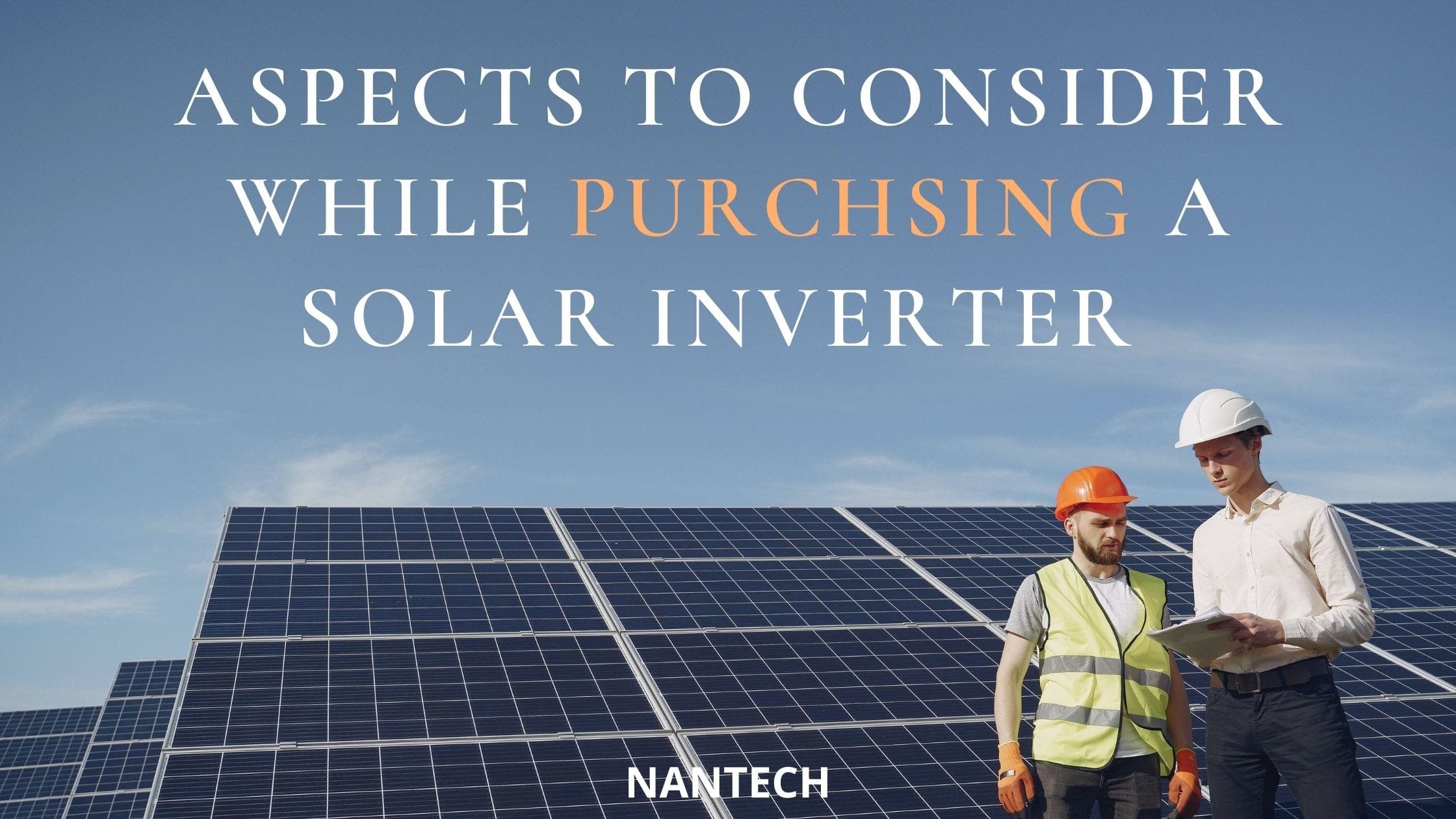- Home
- About us
- Products
- Dealer Enquiry
- Contact Us
- 044 -2486 1994
- +91 99623 98222
- sales@nantech.in
- REQUEST A QUOTE

What better time than now to invest in environmentally conscious and economically sound power supply machinery? So, an inverter's basic function is to save electricity when power is available and, on the occasion of a power cut, supply power to run at least the basic machinery and appliances like fans and lights to help the user. Solar inverters like the ones made by Nantech are created using solar power as the inverter's primary power supply.
Off-Grid stand-alone inverters: These are isolated inverter systems usually supplying only a single home or office building.
Grid-connected inverters without battery back-up: Here, all the converted solar energy is stored in a central grid system supplying multiple buildings and acts as a back-up for all these buildings when there is a power- cut. There are no batteries, and these inverters have PowerPoint tracker systems for systemic power generation.
Grid type inverters with battery back-up: An amalgamation of the above two types of inverters.
Offred grid inverters are mostly used for residential users and are capable of supplying enough power for essential needs. However, it is of paramount importance that a customer knows what he is buying to avoid any kind of mishap, whether financial or physical. So here is a list of few things you should keep in mind while buying a solar inverter:
Battery Voltage range: The voltage that can be fed into the battery from sunlight.
DC current: Maximum current which it can handle.
Voltage range: The voltage that can be fed into the inverter by sunlight.
Continuous power output: The maximum time the inverter can produce continuous power at said temperature.
Output voltage: So that it is compatible with your household requirement, which is generally 210-220V.
Frequency: For India is 50 Hz.
Efficiency: The amount of actual solar energy received by the panels converted to electrical energy supplied to our homes. No Machine 100% efficient. We recommend solar inverters with galvanic insolation having an efficiency of 94% and 97% for without galvanic isolation.
No-load power consumption: The amount of energy that the inverter itself uses up without supplying to a load. It is important to determine efficiency.
Surge Power: some machines, like motors, require more power to start than the rest of its run time. We recommend surge value between 3- 6.
Output waveform: We recommend a pure sine wave property for high efficiency.
Maximum power point tracking ability: This system prevents overcharging and under-charging of the inverter.
Output voltage: So that it is compatible with your household requirement, which is generally 210-220V.
Ambient weather conditions: To preferably include your room temperature range and average humidity.
Grid frequency synchronization range: 3 Hz
Ingress protection rating: It is a protection rating, and its minimum value should be IP65.
Power factor: Greater than 0.9.
Data logging software: For user information and convenience.
Inverter warranties: Should have at least a 1-year warranty.
Also Read: A Basic understanding : Solar inverters
It is very important to consider these aspects while making a purchase. Check out Nantech’sline of the solar inverter as their products satisfy the above-mentioned features.
~Happy shopping!
Here’s How You Can Increase Battery Life
Why Is An Inverter Supplier In Chennai Important For Smart Homes?
Why Should Businesses Consider Solar Power Installations?
Methods For Getting Through Power Cuts
Emerson UPS Preventive Maintenance Checklist – Get To It!
Why Voltage Stabilizers Are Needed?
Replace a UPS Battery or Buy a New UPS System?
A Closer Look at Solar Inverter vs Normal Inverter